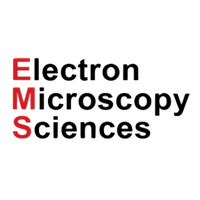Reference stage micrometer (EMS)
This high-precision image analysis standard provides four test areas designed for calibrating image analysis systems and identifying deviations and distortions in optical imaging systems.
The standard, which can also be used as a high-precision stage micrometer, is supplied with recommendations for its use and an individual certificate of calibration.
It is produced on a 75mm x 25mm slide and has a square grid accuracy of 0.1 micrometre and a dot accuracy of 0.3 micrometre (except for the smallest and largest two dots on the root-2 array, where accuracy is 0.5 micrometre). The four test areas are:
- 400 micrometre x 400 micrometre square grid, which is subdivided into 200, 100, 50 and 25 micron squares, provides a means of detecting gross image distortions, and can be used as an accurate two-dimensional stage micrometer.
- A 20 x 17 array of nominally 15-micrometre diameter dots can be used to identify lens distortions. i.e., to set the field of view to eliminate edge distortion.
- A root-2 array of spots from 3 micrometres to 48 micrometres in diameter is used for determining the threshold levels of cameras and microscope systems.
- A log-normal distribution array of 100 spots ranging from 4.5 micrometres to 27 micrometres in diameter enables the mean and standard deviation to be determined and compared with the certified values. This is an idealized distribution of maximum dynamic range for a full screen.
.tg {border-collapse:collapse;border-spacing:0;} .tg td{border-color:black;border-style:solid;border-width:1px;font-family:Arial, sans-serif;font-size:14px; overflow:hidden;padding:10px 5px;word-break:normal;} .tg th{border-color:black;border-style:solid;border-width:1px;font-family:Arial, sans-serif;font-size:14px; font-weight:normal;overflow:hidden;padding:10px 5px;word-break:normal;} .tg .tg-9hzb{background-color:#FFF;font-weight:bold;text-align:center;vertical-align:top} .tg .tg-ktyi{background-color:#FFF;text-align:left;vertical-align:top} .tg .tg-0lax{text-align:left;vertical-align:top}
| The Four Test Areas | |
|---|---|
 |
400µm x 400µm square grid which is subdivided into 200, 100, 50 and 25 micron squares provides a means of detecting gross image distortions, and can be used as an accurate two dimensional stage micrometer. |
 |
A 20 x 17 array of nominally 15µm diameter dots can be used to identify lens distortions. i.e. to set the field of view to eliminate edge distortion. |
 |
A log-normal distribution array of 100 spots ranging from 4.5µm to 27µm diameter enables the mean and standard deviation to be determined and compared with the certified values. This is an idealized distribution of maximum dynamic range for a full screen. |
 |
A root-2 array of spots from 3µm to 48µm diameter is used for determining the threshold levels of cameras and microscope systems. |



